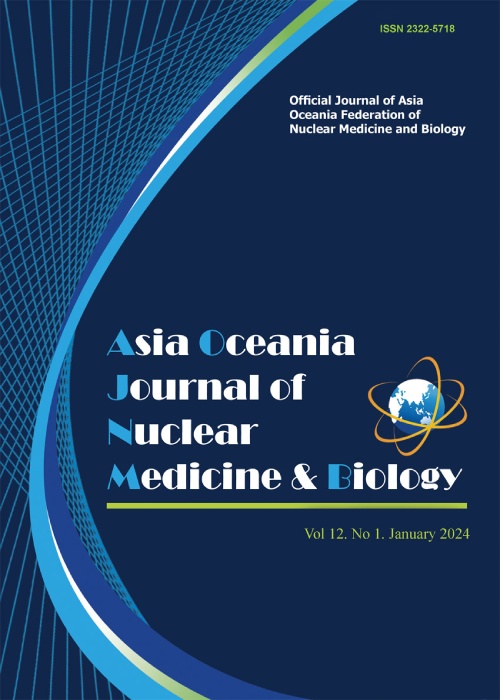Simplified Dynamic Phantom for Pediatric Renography: A Description of Instrument and Its Performance
Author(s):
Article Type:
Research/Original Article (دارای رتبه معتبر)
Abstract:
Objective(s)
Renography is used for the diagnostic evaluation of pediatric patients with a suspected obstruction of urinary tract or impaired renal function. The recommended dose for children have been released by the European Association of Nuclear Medicine, Society of Nuclear Medicine and Molecular Imaging, and Japanese Society of Nuclear Medicine. Since acquisition counts in dynamic scintigraphy are affected by the administered doses and sensitivity of the scintillation camera, the scan procedure should be determined independently. In this study, we constructed simplified dynamic phantom imitating pediatric renography and tested its performance.
Methods
Simplified dynamic phantom consisted of three components (i.e.,infusion, imitated kidney, and drainage sections). The infusion rates (mL/min) were determined by comparing the time activity curves obtained from patients with normal renal function. The time-points of the maximum counts (Tmax), as well as the two-thirds and one-half of the maximum counts (T2/3 and T1/2) were measured in different doses using the phantom with the best-match infusion rate and duration, and low-energy general-purpose (LEGP) or low-energy highresolution (LEHR) collimators and applying different attenuations.
Results
The best-match infusion rates of the phantom to imitate the time activity curve of the normal renal function were 42.0, 1.0, 0.6, and 0.3 mL/min in the arterial, secretory, early-excretory, and late-excretory phases, respectively. When 30 MBq, LEHR collimator and non-water-equivalent phantom were applied, Tmax, T2/3, and T1/2 were 242±15.3, 220±10.0 and 317±25.2 seconds, respectively. Using LEGP collimator and (3 MBq of activity) 5-cm water-equivalent phantom, Tmax, T2/3, and T1/2 values were estimated as 242±5.8, 213±11.5, and 310±17.3 sec, respectively.
Conclusion
Our simplified dynamic phantom for pediatric renography could imitate the time activity curves obtained from patients with normal renal function. Tmax, T2/3, and T1/2 could be measured under various settings of dose,collimator, and tissue attenuation.Keywords:
Language:
English
Published:
Asia Oceania Journal of Nuclear Medicine & Biology, Volume:7 Issue: 1, Winter 2019
Pages:
38 to 48
magiran.com/p1916265
دانلود و مطالعه متن این مقاله با یکی از روشهای زیر امکان پذیر است:
اشتراک شخصی
با عضویت و پرداخت آنلاین حق اشتراک یکساله به مبلغ 1,390,000ريال میتوانید 70 عنوان مطلب دانلود کنید!
اشتراک سازمانی
به کتابخانه دانشگاه یا محل کار خود پیشنهاد کنید تا اشتراک سازمانی این پایگاه را برای دسترسی نامحدود همه کاربران به متن مطالب تهیه نمایند!
توجه!
- حق عضویت دریافتی صرف حمایت از نشریات عضو و نگهداری، تکمیل و توسعه مگیران میشود.
- پرداخت حق اشتراک و دانلود مقالات اجازه بازنشر آن در سایر رسانههای چاپی و دیجیتال را به کاربر نمیدهد.
In order to view content subscription is required
Personal subscription
Subscribe magiran.com for 70 € euros via PayPal and download 70 articles during a year.
Organization subscription
Please contact us to subscribe your university or library for unlimited access!


